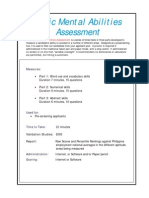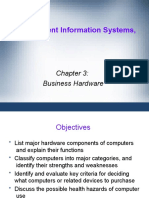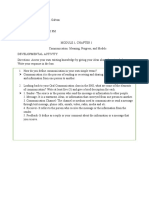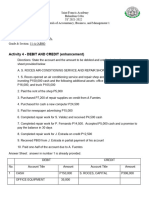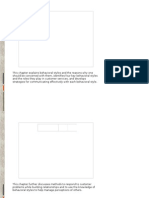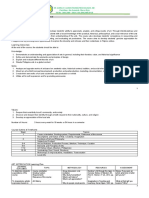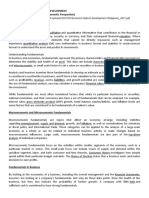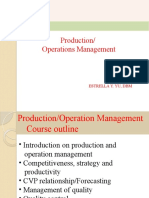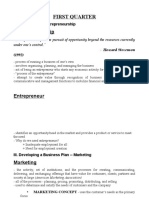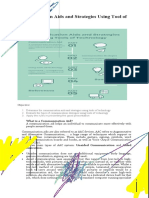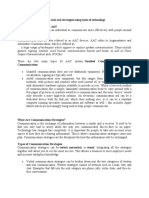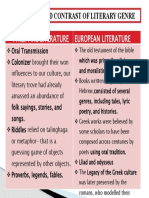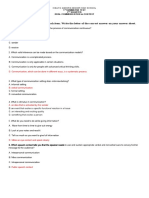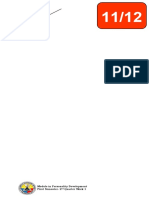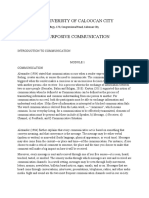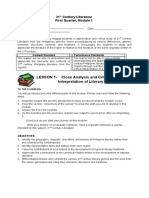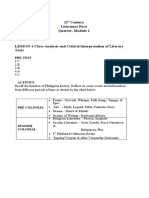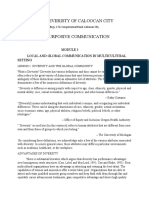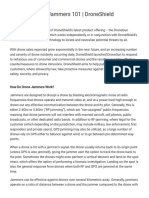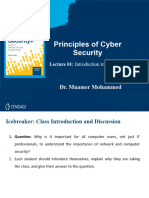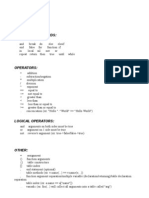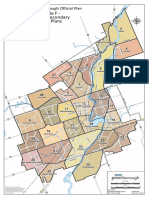UNIVERISTY OF CALOOCAN CITY
Brgy. 173, Congressional Road, Caloocan City
PURPOSIVE COMMUNICATION
MODULE 5
COMMUNICATION AIDS AND STRATEGIES USING TOOLS OF
TECHNOLOGY
Technology has taken over the world in these past decades. Its rapid development has
made a huge impact on each aspect of life — and, yes, communication. But how huge is its
impact in communication?
What is a Communication Aid?
A communication aid helps an individual to communicate more effectively with people around
them.
Communication aids are also referred to as AAC devices. AAC refers to Augmentative and
Alternative Communication, which is defined as,
… a huge range of techniques which support or replace spoken communication. These include
gesture, signing, symbols, word boards, communication boards and books, as well as Voice
Output Communication Aids (VOCAs).
There are two main types of AAC system: Unaided Communication and Aided
Communication.
Unaided communication does not use additional equipment. Body language, gesture,
vocalization, signing are typically used.
Aided communication uses equipment, but this ranges from low-tech to high-tech
methods, with pictures and symbols often used instead of, or together with words and
with alternative hardware options available to provide access. Whilst a low-tech method
of communication like a simple, laminated communication book to carry around with a
few pages of pictures or symbols would be a communication aid, the term ‘device’ would
only describe a more high-tech solution. An electronic communication aid can be a
dedicated device built for that job, which does nothing else, or it can be a standard
computer running specialist communication aid software as well – this includes Apple
tablets which are increasingly being used to help people communicate.
� What Are Communication Strategies?
Communication is the exchange of information between a sender and a receiver. It used
to be that you only had to worry about the way you communicated face-to-face or on
paper. Technology has changed this completely. It is important for people to take into
account every aspect of how they are relaying information. This is where communication
strategies come into play. Communication strategies are the blueprints for how this
information will be exchanged.
Types of Communication Strategies
Communication strategies can be verbal, nonverbal, or visual. Integrating all the
strategies together will allow you to see the most success. This allows a business to meet
employee needs and increase workplace knowledge.
Verbal communication strategies can be broken down into the two categories of written
and oral communication. Written strategies consist of avenues such as e-mail, text, and
chat. Examples that fall into the oral category are phone calls, video chats, and face-to-
face conversation.
Nonverbal communication strategies consist of mostly visual cues, such as body
language, facial expressions, physical distance between communicators, or the tone of
your voice. These cues are typically not intended. However, it is important to realize the
message you are sending. Otherwise, you may be saying one thing, yet the receiver is
hearing another.
Visual communication strategies can be seen through signs, web pages, and illustrations.
These strategies are used in the workplace to draw attention and provide documentation.
Human resources is required to post certain visuals throughout the workplace to comply
with safety laws.
Using Tools of Technology
Multimedia is content that uses a combination of different content forms such as text, audio,
images, animations, video and interactive content. Multimedia contrasts with media that use only
rudimentary computer displays such as text-only or traditional forms of printed or hand-produced
material.
A transparency, also known variously as a view foil, foil, or view graph, is a thin sheet
of transparent flexible material, typically cellulose acetate, onto which figures can be
drawn. These are then placed on an overhead projector for display to an audience. Many
companies and small organizations use a system of projectors and transparencies in
meetings and other groupings of people, though this system is being largely replaced by
video projectors and interactive whiteboards.
� Video is an electronic medium for the recording, copying, playback, broadcasting, and
display of moving visual media.
Sound recording and reproduction is an electrical, mechanical, electronic, or digital
inscription and re-creation of sound waves, such as spoken voice, singing, instrumental
music, or sound effects.







